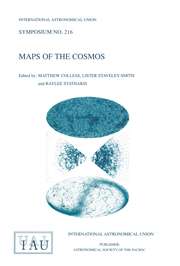No CrossRef data available.
Article contents
Global Fringe Fitting for Space Interferometry
Published online by Cambridge University Press: 03 August 2017
Extract
The technique of global fringe fitting has proven to be very valuable for very-long-baseline interferometry (VLBI). It allows weaker fringes to be detected than is possible with conventional single-baseline fringe fitting algorithms, and thus improves the sensitivity of present VLBI arrays. Global fitting was developed for VLBI by Schwab and Cotton (1983, Astron. J.88, 688), and has been incorporated into the NRAO Astronomical Image Processing System as program VBFIT. As Schwab and Cotton point out, this is a generalized from of self-calibration in which closure relations for residual fringe delay and rate (frequency) are satisfied in addition to those for fringe phase and amplitude. These additional closure relations allow station-dependent delays and rates to be solved for, using data from all baselines with sufficiently strong fringes. Then it is possible to calculate where fringes will be on any less sensitive baselines between these telescopes, so that very narrow search windows in delay and rate can be used.
Information
- Type
- Instrumentation and Analysis
- Information
- Copyright
- Copyright © Reidel 1988

